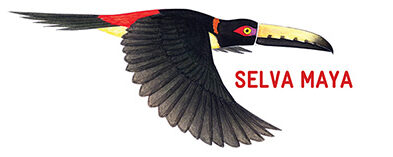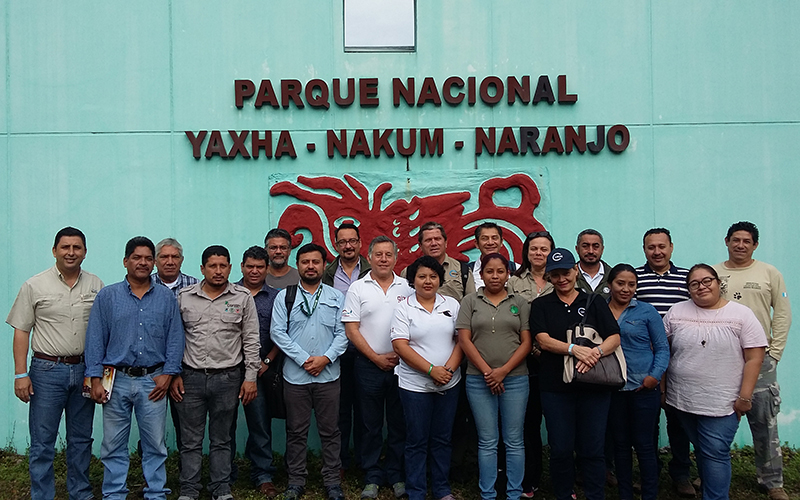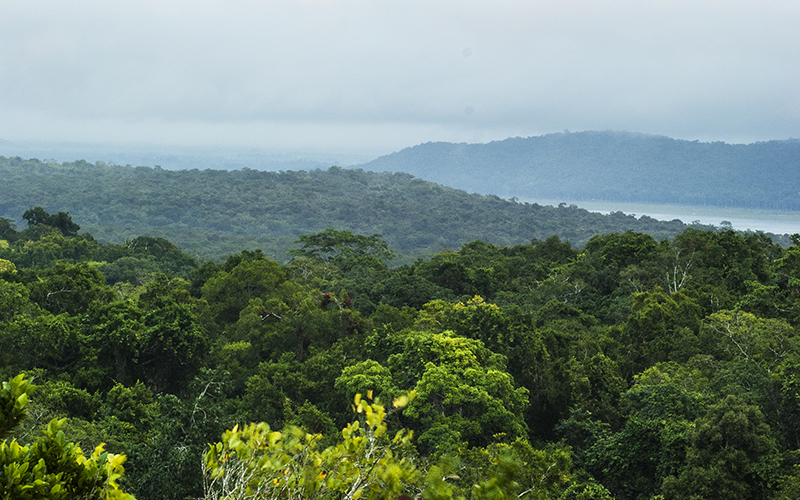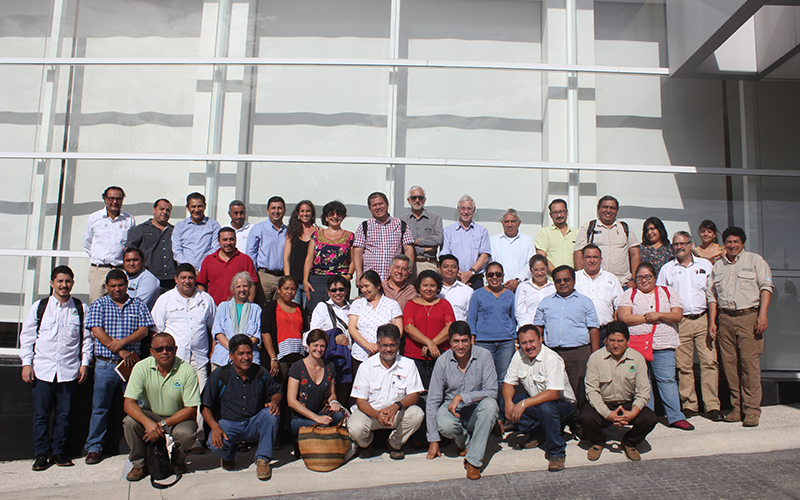On September 25, 2019, the annual Workshop of the Regional Group for the monitoring of water bodies and associated fauna in the Selva Maya (MASM) was held in Flores, Guatemala.The objective of this group is to use standardized monitoring of bodies of water and associated fauna as an indicator of the state of conservation of biodiversity and climate change in the region, and to then generate management and conservation recommendations for decision makers. During the workshop, those working in this field in the Selva Maya of Guatemala, Mexico and Belize, shared their experiences; they also discussed recommendations for management and conservation of water bodies in the region.
Derived from the discussions of the workshop, it was concluded that between 2018 and 2019 the waterholes in the Selva Maya have presented a critical situation, registering that more than 90% of them remain dry compared to other years; this coincides with an increase in the number of animals found dead (i.e. tapir and white-lipped peccary).
On the other hand, there is a warning about the threats that the reduction of water and humidity in the Selva Maya can generate, among others, the increase of forest fires, conflicts between wild animals and humans, and the decrease of income from sustainable activities, such as ecotourism, beekeeping, ad agroforestry. At the end of the event, the MASM prepared an official statement that can be read here (in spanish).




